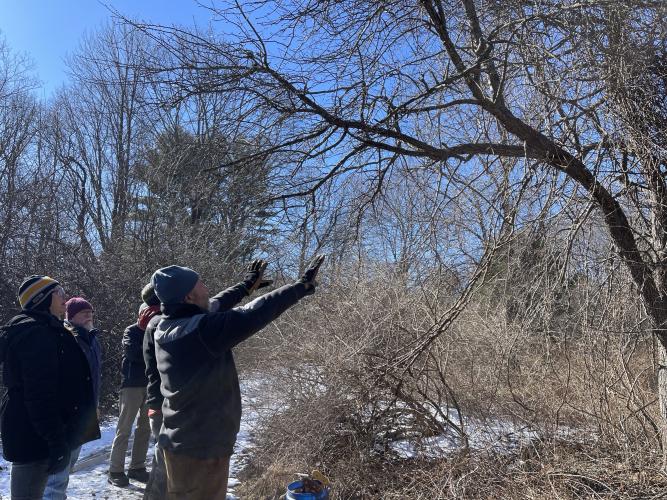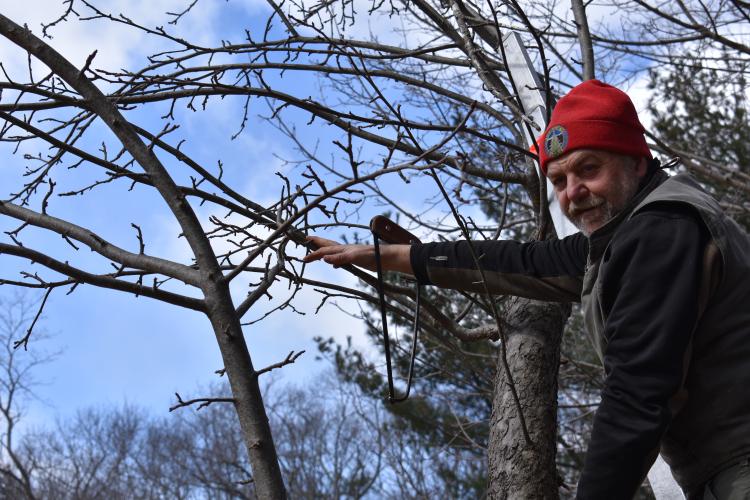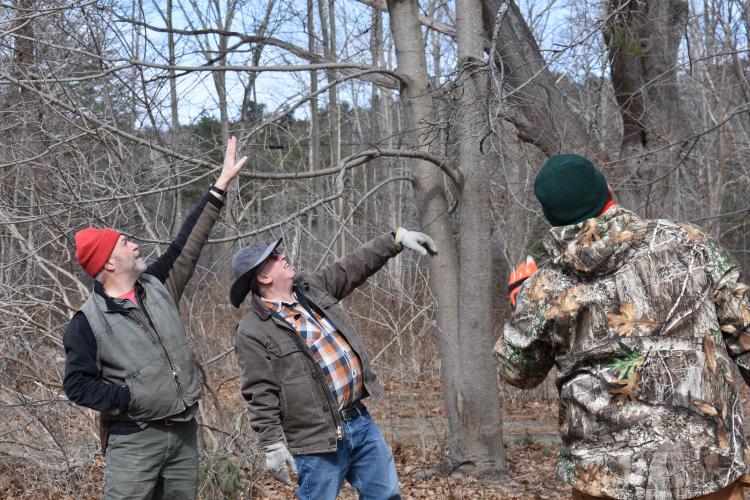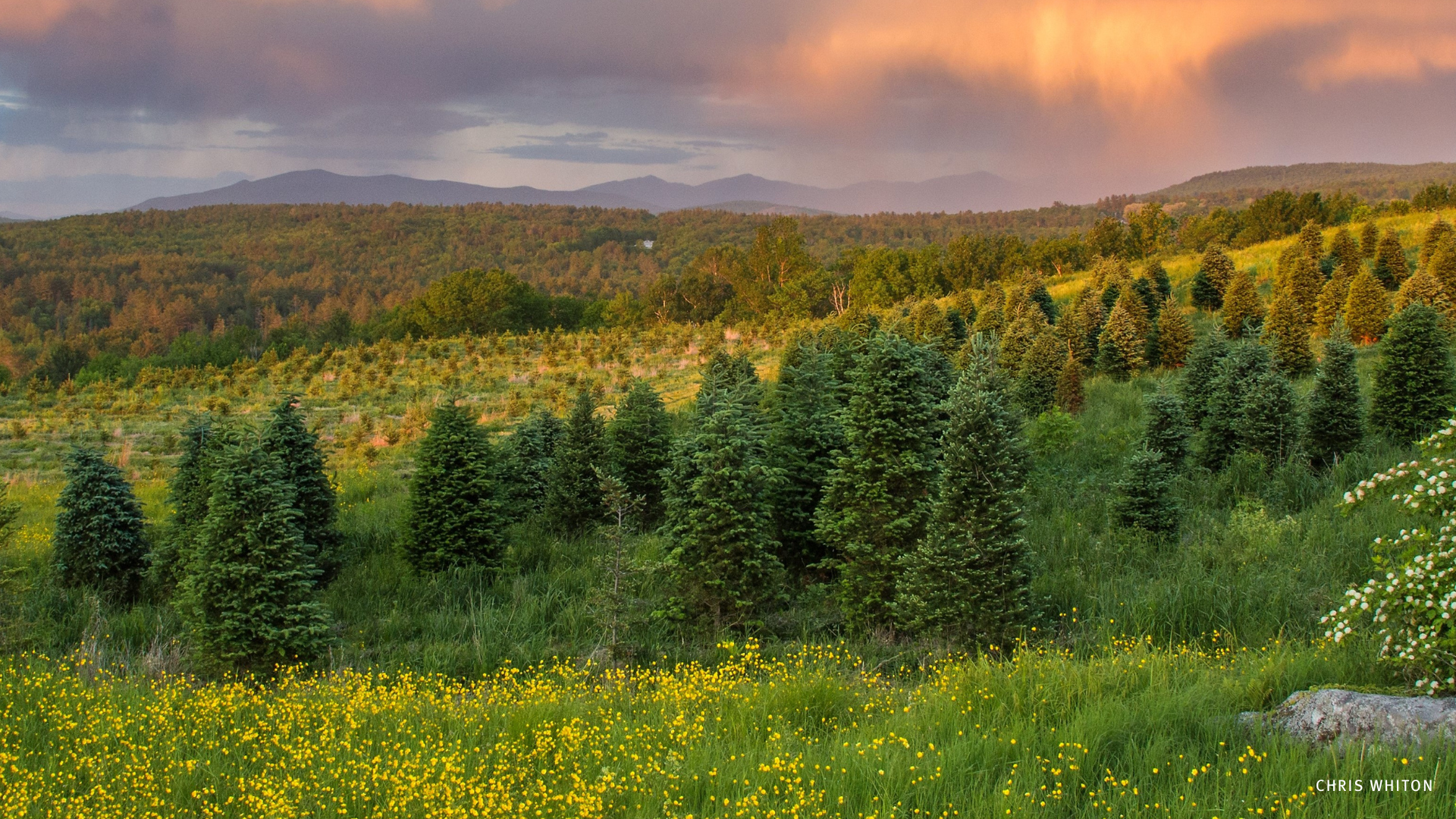Getting to Know Your Trees

Looking for potential while pruning.
To prune or not to prune, that is the question! The answer, as with many things always involves an "and."
The science of pruning fruit trees involves understanding plant physiology, growth patterns, and horticultural principals. In addition to that, it involves a personal relationship with the tree being pruned and the land and wild neighbors and perhaps property owner you are working for.
Sometimes, this means having a very frank conversation with yourself if you are doing your own pruning.
Forest Society Senior Outreach Manager Nigel Manley recently visited Creek Farm to demonstrate some pruning as well as to share about the in-depth relationship it requires.
The idea behind pruning that that it aims to optimize sunlight exposure, air circulation and fruit production by removing dead or unwanted branches. In the end, a healthy tree is what you are after.
But wait, just as all trees are givers, other individuals come into this conversation. Who's ideas of aesthetically pleasing are you following? Who is the fruit for? If it is for you, are you willing to share with wildlife? If it's for wildlife, are you willing to work alongside wildlife and accommodate, for instance, a large bear, unaware of their weight, cracking a branch?

There's no body shaming here - after all, if you are pruning with wildlife in mind, a big bear breaking a limb shows success on your part! And for non-wild neighbors, aka the land owner, is the orchard mowed? If so, mower height branches will not go over well with those who are mowing! Many factors that dance around together in these sometimes ancient orchards.
When done well, a balance is created between maintaining fruit production for human consumption and providing habitat and food for local wildlife.
This can be achieved by leaving some branches unpruned or retaining deadwood, creating space for birds and insects.
Careful and thoughtful pruning practices can contribute to a diverse ecosystem and support biodiversity in and around orchards. Black bears, grey fox, red fox, deer, coyote, red squirrel, gray squirrel, chipmunk, porcupine, a wide variety of songbirds and more all enjoy the apple trees planted so long ago, and our present apple orchards.
We also discussed deterrents to help our wild neighbors not find specific trees that are near and dear to our hearts as appetizing such as metal baffles, bush netting and more.
Pruning fruit trees poses challenges such as determining the right balance between removing enough branches for optimal growth and ensuring not to over prune - if anyone has ever given themselves bangs, you know this is a fine line to walk. In addition, other challenges include the right timing, skill in recognizing diseased or damaged branches and treating and stopping the spread of said disease as well as staying abreast of best practices.

You also must be able to adapt techniques based on tree species and age. As stated above, the challenge of who you are pruning the tree for, individual preferences and needs and goals can all introduce subjective elements into the pruning process.
Long story short - pruning is personal, and an investment. This is not a one and done type of deal. Each year, coming back to the tree, you are achieving a long term goal, a journey that both you and the tree will be taking, battling weather, climate change, wildlife, and more. In a society that is seemingly going at a faster and faster rate, to take the time to spend with a tree, see their history, and help guide them towards a strategic goal is almost an act of rebellion. It is also an act of humility and patience as well as confidence.
Watching our attendees, some of whom had attended workshops with Nigel in the past, share their opinions, experiences and challenges showed just how powerful sharing experiences and lessons learned can be. It was also a great reminder of how staying humble when working with nature is a necessity. To have worked with trees for 30+ years and still be learning, now that is truly harvesting the fruit of your labor! We look forward to seeing you are our next workshop and go hug your fruit tree (or any tree!)
